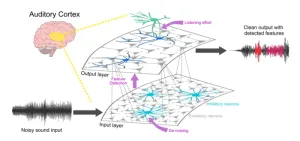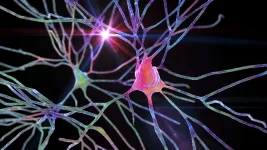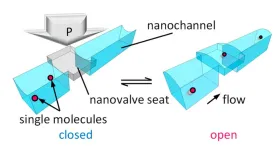(Press-News.org) PITTSBURGH, May 2, 2023 — In a paper published today in Communications Biology, auditory neuroscientists at the University of Pittsburgh describe a machine learning model that helps explain how the brain recognizes the meaning of communication sounds, such as animal calls or spoken words.
The algorithm described in the study models how social animals, including marmoset monkeys and guinea pigs, use sound-processing networks in their brain to distinguish between sound categories – such as calls for mating, food or danger — and act on them.
The study is an important step toward understanding the intricacies and complexities of neuronal processing that underlies sound recognition. The insights from this work pave the way for understanding, and eventually treating, disorders that affect speech recognition, and improving hearing aids.
“More or less everyone we know will lose some of their hearing at some point in their lives, either as a result of aging or exposure to noise. Understanding the biology of sound recognition and finding ways to improve it is important,” said senior author and Pitt assistant professor of neurobiology Srivatsun Sadagopan, Ph.D. “But the process of vocal communication is fascinating in and of itself. The ways our brains interact with one another and can take ideas and convey them through sound is nothing short of magical.”
Humans and animals encounter an astounding diversity of sounds every day, from the cacophony of the jungle to the hum inside a busy restaurant. No matter the sound pollution in the world that surrounds us, humans and other animals are able to communicate and understand one another, including pitch of their voice or accent. When we hear the word “hello,” for example, we recognize its meaning regardless of whether it was said with an American or British accent, whether the speaker is a woman or a man, or if we’re in a quiet room or busy intersection.
The team started with the intuition that the way the human brain recognizes and captures the meaning of communication sounds may be similar to how it recognizes faces compared with other objects. Faces are highly diverse but have some common characteristics.
Instead of matching every face that we encounter to some perfect “template” face, our brain picks up on useful features, such as the eyes, nose and mouth, and their relative positions, and creates a mental map of these small characteristics that define a face.
In a series of studies, the team showed that communication sounds may also be made up of such small characteristics. The researchers first built a machine learning model of sound processing to recognize the different sounds made by social animals. To test if brain responses corresponded with the model, they recorded brain activity from guinea pigs listening to their kin’s communication sounds. Neurons in regions of the brain that are responsible for processing sounds lit up with a flurry of electrical activity when they heard a noise that had features present in specific types of these sounds, similar to the machine learning model.
They then wanted to check the performance of the model against the real-life behavior of the animals.
Guinea pigs were put in an enclosure and exposed to different categories of sounds — squeaks and grunts that are categorized as distinct sound signals. Researchers then trained the guinea pigs to walk over to different corners of the enclosure and receive fruit rewards depending on which category of sound was played.
Then, they made the tasks harder: To mimic the way humans recognize the meaning of words spoken by people with different accents, the researchers ran guinea pig calls through sound-altering software, speeding them up or slowing them down, raising or lowering their pitch, or adding noise and echoes.
Not only were the animals able to perform the task as consistently as if the calls they heard were unaltered, they continued to perform well despite artificial echoes or noise. Better yet, the machine learning model described their behavior (and the underlying activation of sound-processing neurons in the brain) perfectly.
As a next step, the researchers are translating the model’s accuracy from animals into human speech.
“From an engineering viewpoint, there are much better speech recognition models out there. What’s unique about our model is that we have a close correspondence with behavior and brain activity, giving us more insight into the biology. In the future, these insights can be used to help people with neurodevelopmental conditions or to help engineer better hearing aids,” said lead author Satyabrata Parida, Ph.D., postdoctoral fellow at Pitt’s department of neurobiology.
“A lot of people struggle with conditions that make it hard for them to recognize speech,” said Manaswini Kar, a student in the Sadagopan lab. “Understanding how a neurotypical brain recognizes words and makes sense of the auditory world around it will make it possible to understand and help those who struggle.”
An additional author of the study is Shi Tong Liu, Ph.D., of Pitt.
END
Machine learning model sheds light on how brains recognize communication sounds
2023-05-02
ELSE PRESS RELEASES FROM THIS DATE:
Cellular “cruise control” system safeguards RNA levels in Rett syndrome nerve cells
2023-05-02
Every cell in our body is able to turn genes (DNA) on or off, producing RNA, but when genes are ‘turned on’ to the wrong level it can result in a variety of health conditions.
Rett syndrome is a rare neurodevelopmental condition that causes a loss of motor and language skills over time in girls. The condition is caused by a genetic variation in the MECP2 gene located on the X chromosome, resulting in affected nerve cells in the brain expressing the wrong levels of more than one thousand genes. The end result is that Rett syndrome nerve cells are smaller, less interconnected and less electrically active than healthy controls.
In ...
Study finds gender pay differences begin early, with the job search
2023-05-02
A new paper in the Quarterly Journal of Economics, published by Oxford University Press, indicates that an important part of the pay gap between men and women has to do with how they conduct job searches, with women more likely to accept job offers early while men tend to hold out for higher pay.
Women in the United States earn 84% of what men earn, as of 2020. This disparity is well documented, and economists and the general public have known about the earnings difference for decades. The reasons for this phenomenon are a matter of considerable debate.
Initial conditions in the labor market are long-lasting. Young workers who begin ...
Single-molecule valve: a breakthrough in nanoscale control
2023-05-02
Scientists dream of using tiny molecules as building blocks to construct things, similar to how we build things with mechanical parts. However, molecules are incredibly small - around one hundred millionth the size of a softball - and they move randomly in liquids, making it very difficult to manipulate them in a single form. To overcome this challenge, “nanofluidic devices” that can transport molecules in extremely narrow channels, similar in size to one millionth of a straw, are attracting attention ...
The science behind the life and times of the Earth’s salt flats
2023-05-02
AMHERST, Mass. – Researchers at the University of Massachusetts Amherst and the University of Alaska Anchorage are the first to characterize two different types of surface water in the hyperarid salars—or salt flats—that contain much of the world’s lithium deposits. This new characterization represents a leap forward in understanding how water moves through such basins, and will be key to minimizing the environmental impact on such sensitive, critical habitats.
“You can’t protect the salars if you don’t first understand how they work,” says Sarah McKnight, lead author of the research that appeared recently ...
HIV status is not associated with mpox treatment outcomes in persons using tecovirimat
2023-05-02
Embargoed for release until 5:00 p.m. ET on Monday 01 May 2023
Annals of Internal Medicine Tip Sheet
@Annalsofim
Below please find summaries of new articles that will be published in the next issue of Annals of Internal Medicine. The summaries are not intended to substitute for the full articles as a source of information. This information is under strict embargo and by taking it into possession, media representatives are committing to the terms of the embargo not only on their own behalf, but also on behalf of the organization they represent.
----------------------------
1. ...
Juvenile salmon migration timing responds unpredictably to climate change
2023-05-02
Climate change has led to earlier spring blooms for wildflowers and ocean plankton but the impacts on salmon migration are more complicated, according to new research.
In a new study, published in the journal Nature, Ecology & Evolution, Simon Fraser University (SFU) researcher Sam Wilson led a set of diverse collaborators from across North America to compile the largest dataset in the world on juvenile salmon migration timing. The dataset includes 66 populations from Oregon to B.C. to Alaska. Each dataset was at least 20 years in length with the longest dating back to 1951. Only wild salmon, and not salmon from hatcheries, ...
State study: labor induction doesn’t always reduce caesarean birth risk or improve outcomes for term pregnancies
2023-05-02
ANN ARBOR, Mich. – In recent years, experts have debated whether most birthing individuals would benefit from labor induction once they reach a certain stage of pregnancy.
But a new statewide study in Michigan suggests that inducing labor at the 39th week of pregnancy for people having their first births with a single baby that is in a head down position, or low risk, doesn’t necessarily reduce the risk of caesarian births. In fact, for some birthing individuals, it may even have the opposite effect if hospitals don’t take a thoughtful approach to ...
OSU-Cascades researcher explores AI solution for tracking and reducing household food waste
2023-05-02
BEND, Ore. – A researcher at Oregon State University-Cascades has received funding to develop a smart compost bin that tracks household food waste.
The project led by Patrick Donnelly, assistant professor of computer science in the OSU College of Engineering, seeks to make a dent in a multi-billion-dollar annual problem in the United States: More than one-third of all food produced in the U.S. goes uneaten.
“At every other step of the agricultural supply chain, food waste is tracked, measured and quantified,” Donnelly ...
Survival from cardiac arrest less likely in Asian American Pacific Islander communities
2023-05-02
DALLAS, May 1, 2023 — Science tells us that when a cardiac arrest happens, bystander CPR can double or even triple the chances of survival.[1] Asian American and Pacific Islander (AAPI) adults who experience cardiac arrest outside of a hospital setting have a substantially lower chance of receiving bystander CPR.[2] During Asian American Pacific Islander Heritage month in May, the American Heart Association, a global force for healthier lives for all, is asking people to “Be the Beat” for their family and learn Hands-Only ...
Your health is in your hands during American Stroke Month
2023-05-02
DALLAS, May 1, 2023 — Strokes can happen to anyone, at any age. In fact, globally about one in four adults over the age of 25 will have a stroke in their lifetime.[1] During American Stroke Month, the American Stroke Association, a division of the American Heart Association, as part of a nationally supported collaboration with HCA Healthcare and the HCA Healthcare Foundation, will teach people everywhere that stroke is largely preventable, treatable and beatable.
A stroke happens when normal blood flow in the brain is interrupted. When parts of the ...






